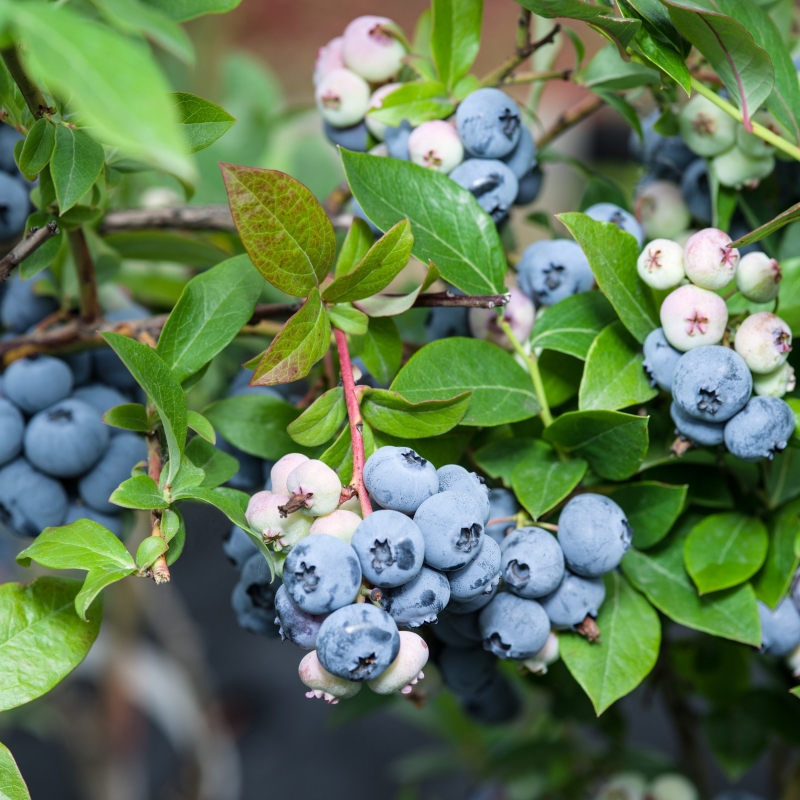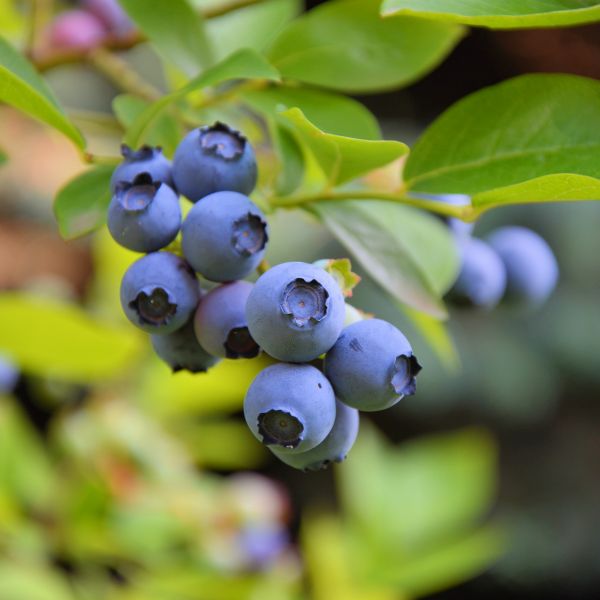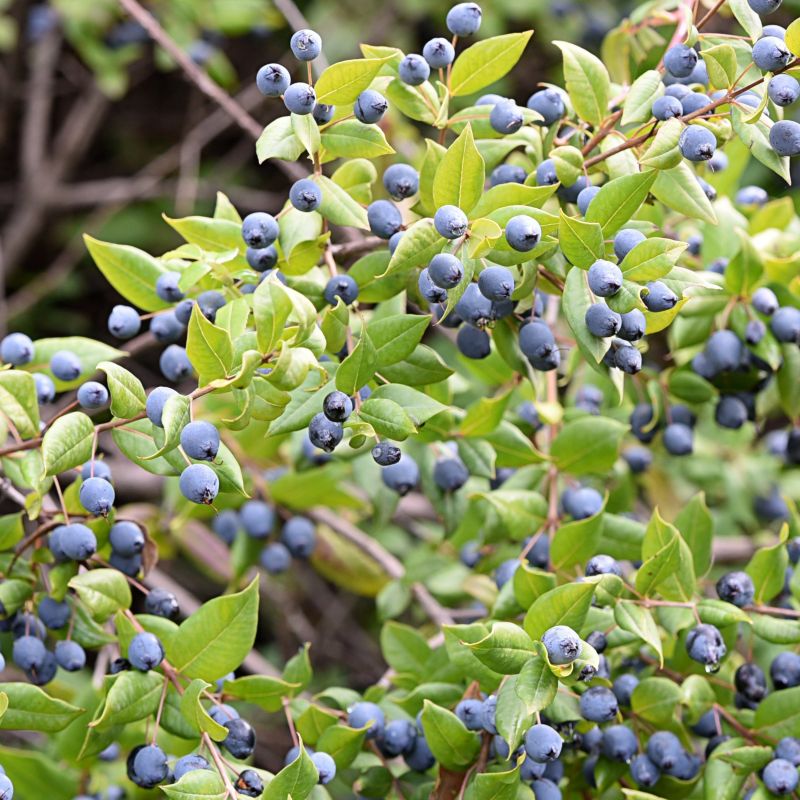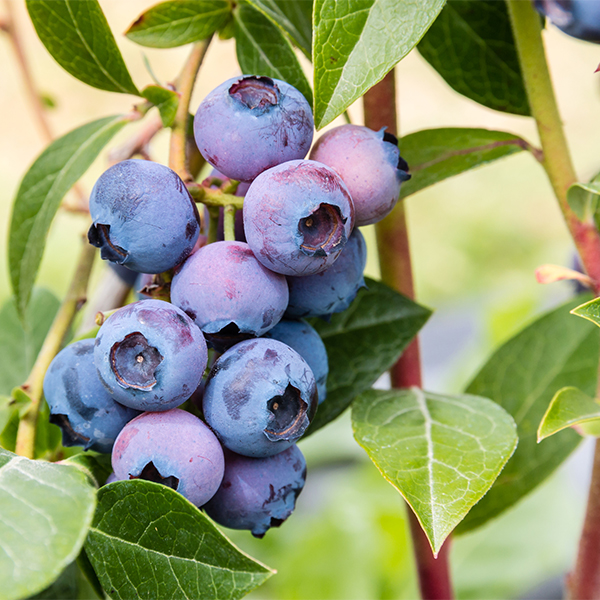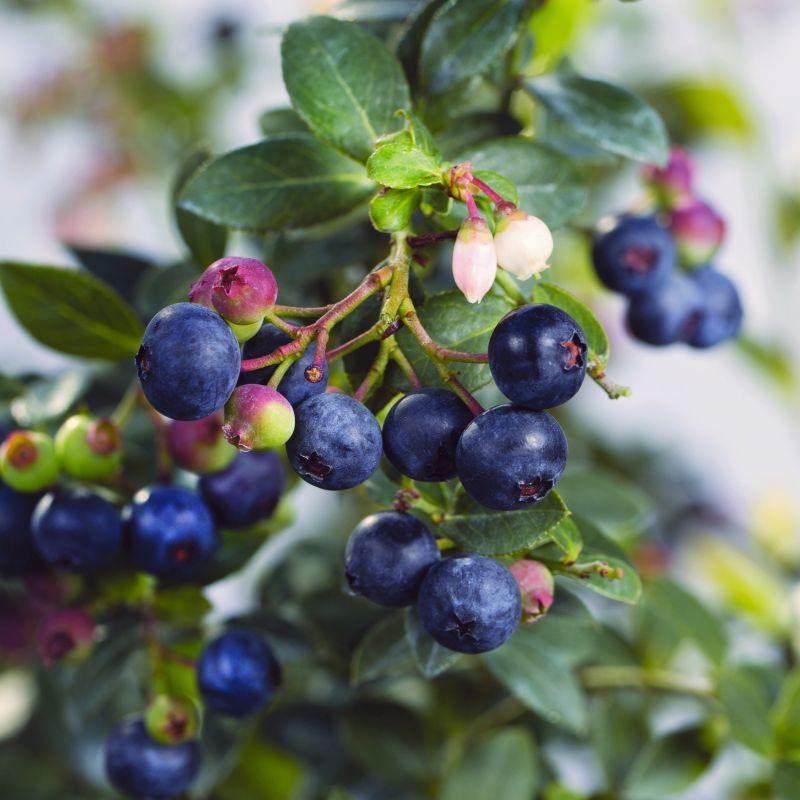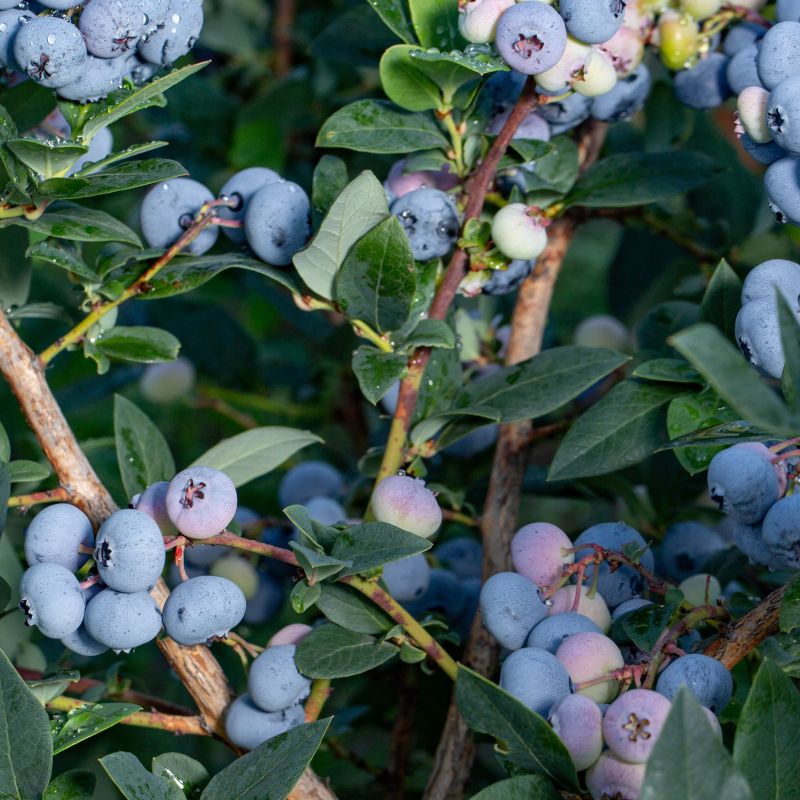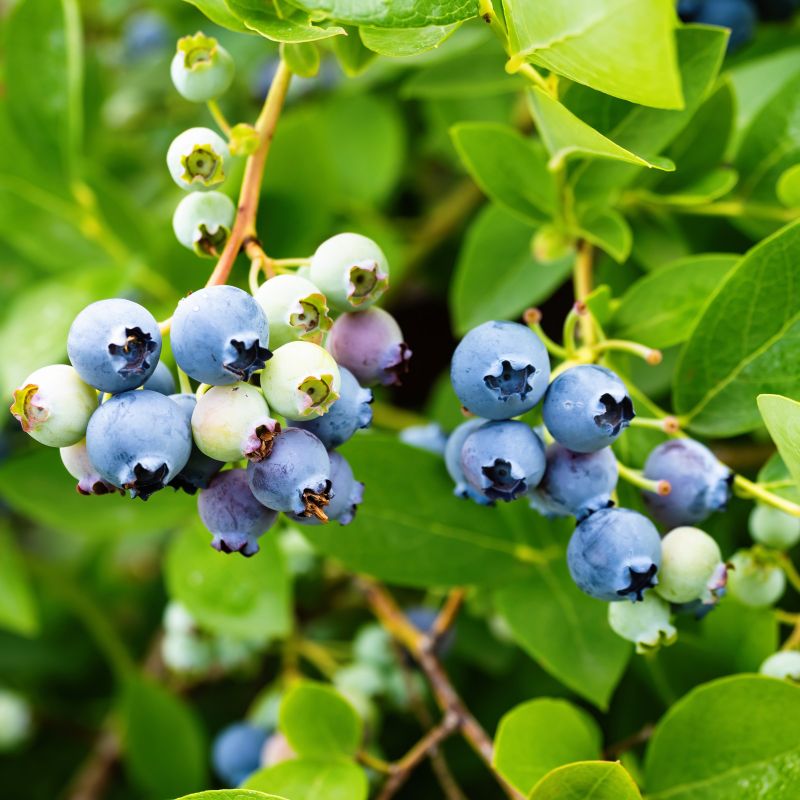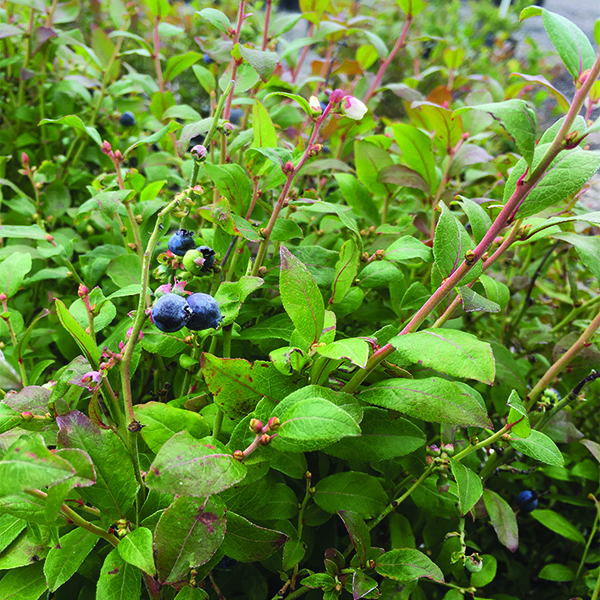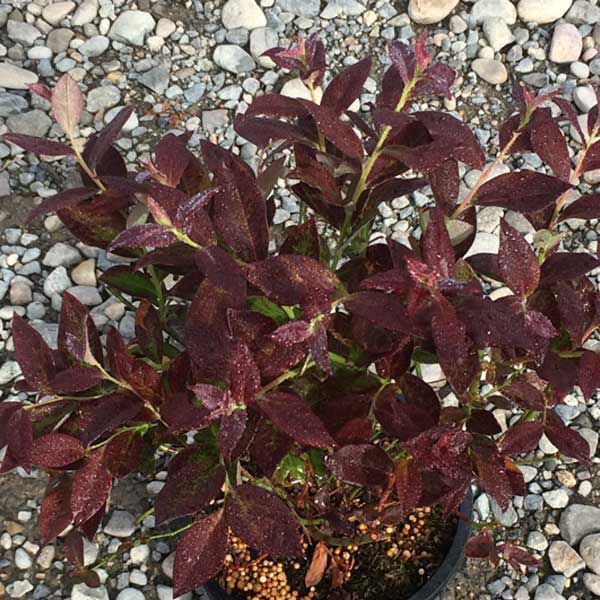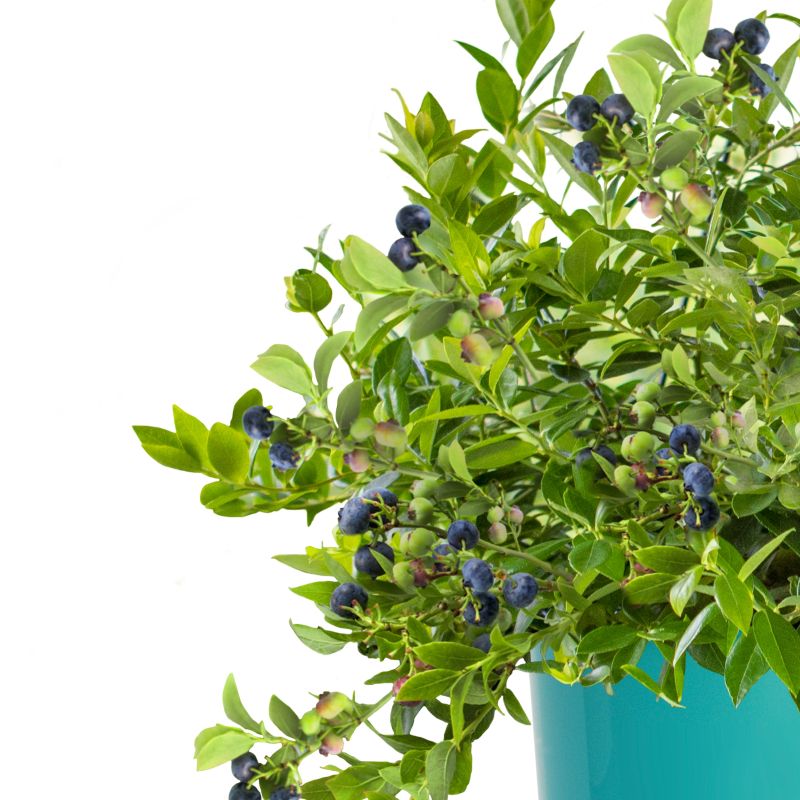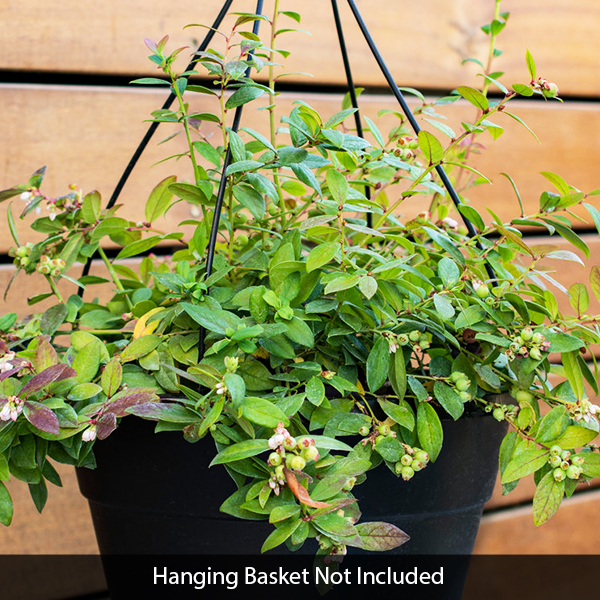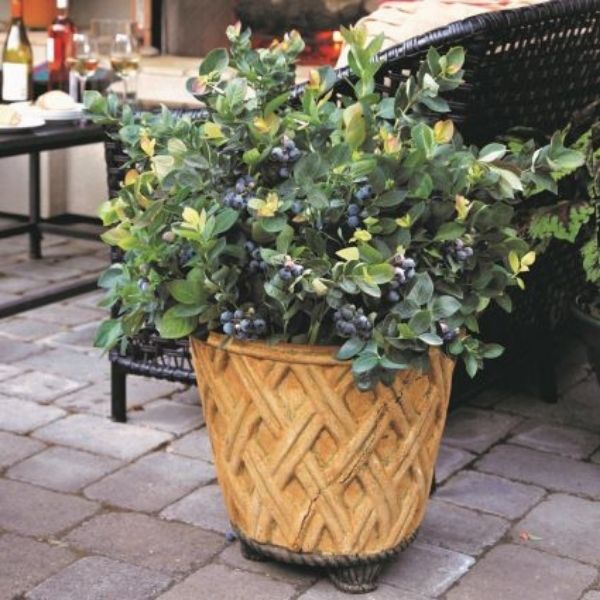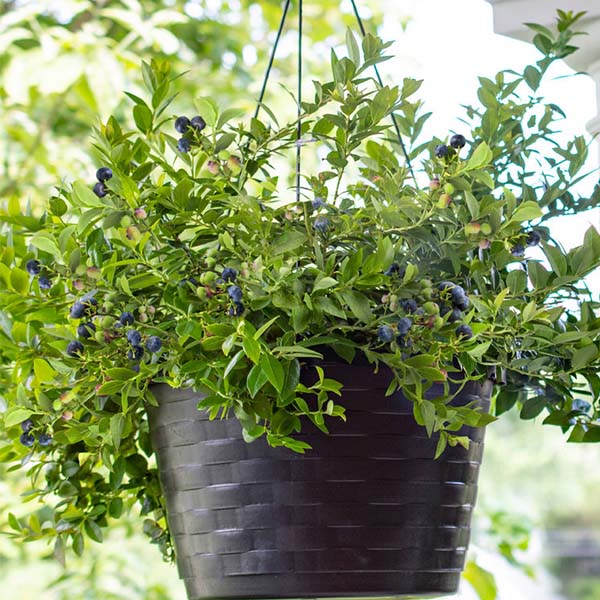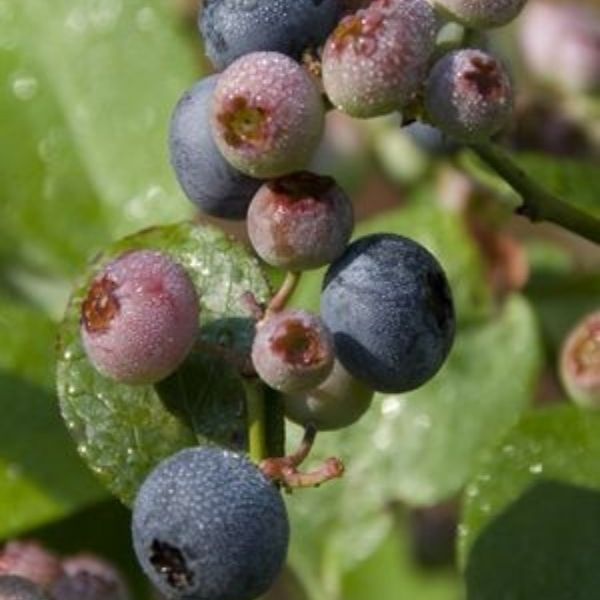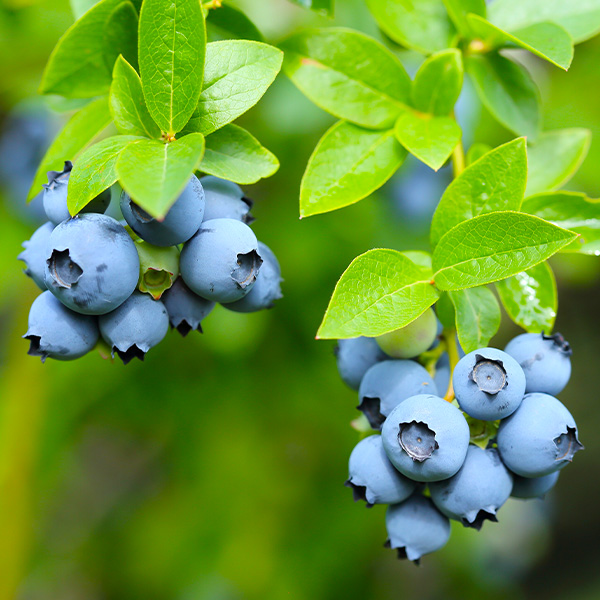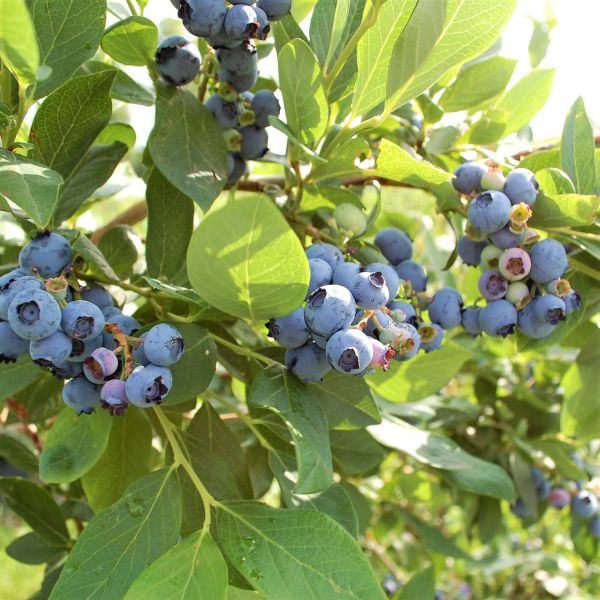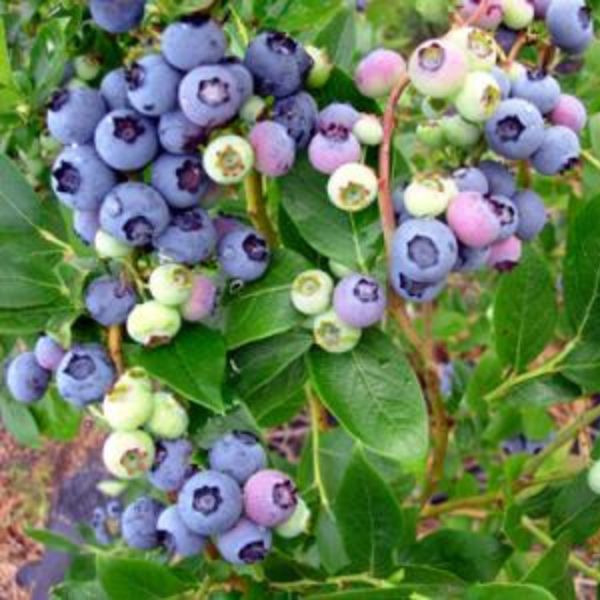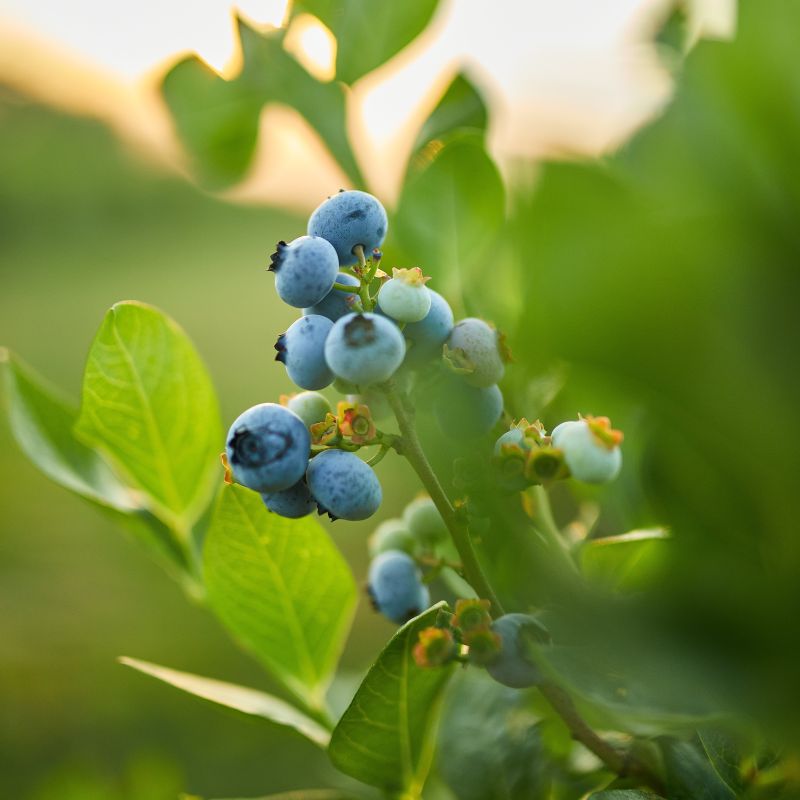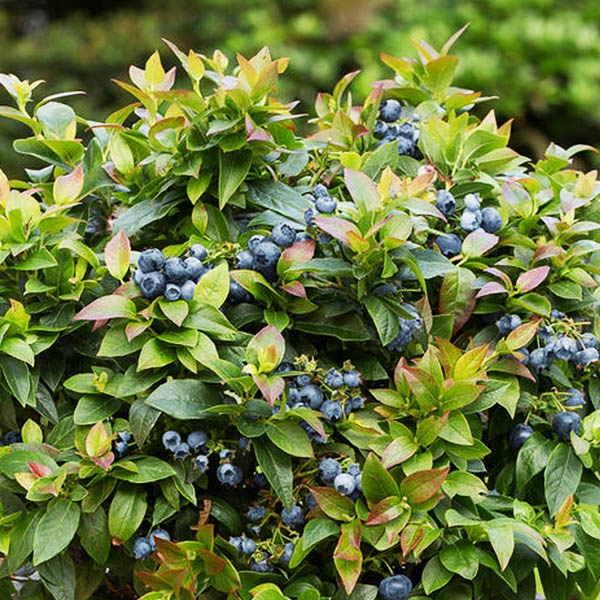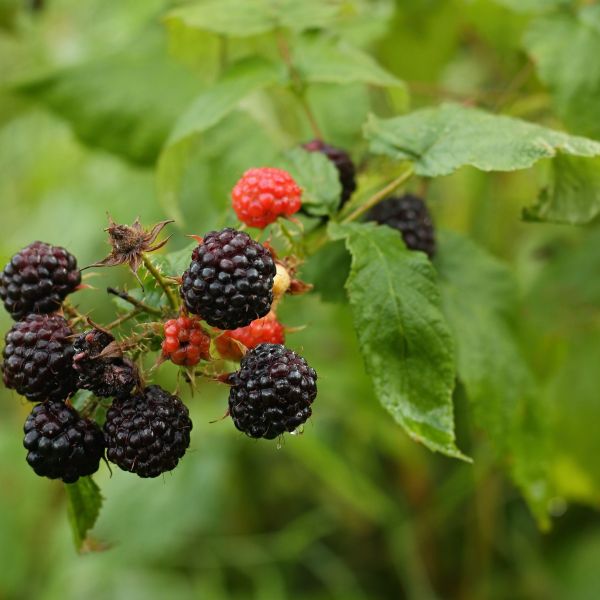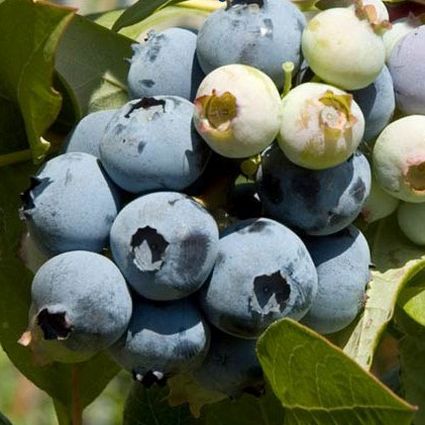
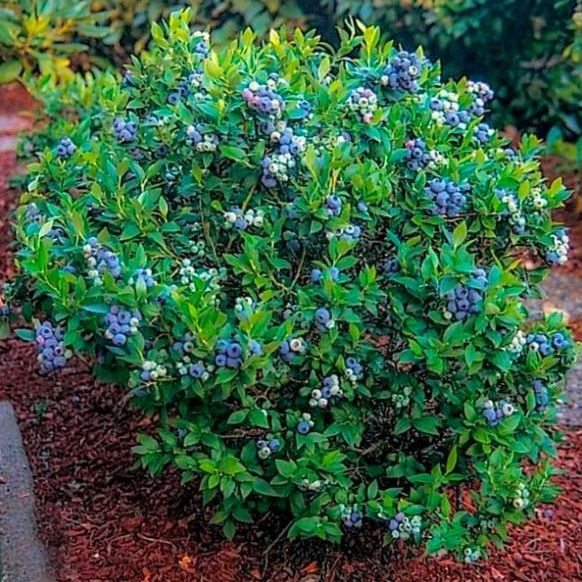
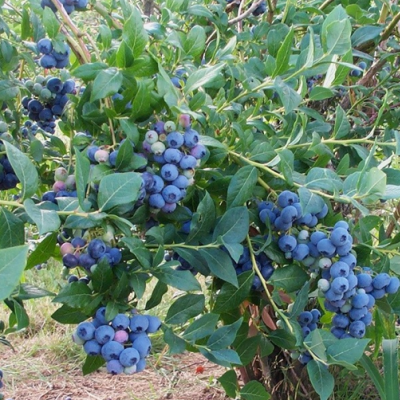
Bluecrop Blueberry
Vaccinium corymbosum 'Bluecrop'
41 reviews
Bluecrop Blueberry
Vaccinium corymbosum 'Bluecrop'
41 reviews
- 2.5 Gallon 1-2 Feet
- Premium 1 Gallon
We are sorry, product is currently out of stock due to seasonal availability. Please check the "Related plants available in your area" section below
Not just beautiful - intentionally selected by ShrubHub's 3D landscape design team to fit real-world spaces and maximize yard potential.
Why Bluecrop Blueberry?
The Bluecrop Blueberry is a popular plant variety due to its high yields, firm berries, and disease resistance. This small, deciduous shrub produces fruit that is large, sweet, and perfect for fresh eating, baking, and freezing. It also has a long fruiting season, making it a valuable addition to home gardens and commercial blueberry operations. The plant prefers acidic soil and full sun exposure, making it well-suited for many growing conditions.
Related plants available in your area
Sunlight
Bluecrop Blueberry requires full sunlight to grow and produce abundant fruit. It should be exposed to at least six hours of direct sunlight per day for optimal growth and fruit development.
Watering
Bluecrop blueberries have moderate watering requirements and need consistently moist but well-drained soil. It is important to provide an inch of water per week, especially during hot and dry periods. However, overwatering should be avoided to prevent root
Fertilizing
Bluecrop blueberries require a well-balanced, acidic fertilizer with a NPK ratio of approximately 10-10-10 or 14-14-14. Regular applications of fertilizer throughout the growing season are recommended to provide necessary nutrients for healthy growth and f
Add Vivacious Blue Charm to Your Space With Bluecrop Blueberry
You can’t beat blueberry plants that portray nature’s charm in the finest of ways, bringing an endearing character to the scene and fashioning an intimate, warm space that never fails to enrich your outdoor experience. The Bluecrop blueberry plant is one of these captivating plants and much more!
The Bluecrop Blueberry bush (Vaccinium corymbosum 'Bluecrop') is an upright deciduous shrub that features USDA hardiness zones 4 to 7 and has a mature size of 5 feet in height and 4 to 6 feet in spread, medium growth rate, and a mid-season harvest time.
Just like a chameleon that impressively changes its colors depending on the environment, Bluecrop blueberry bushes boast year-round interest and different personalities, each of which brightens up your yard with every passing season.
In late spring, mesmerizing bell-shaped creamy-white flowers embellish your outdoor space with an ethereal glow and do the spadework for the spectacular display that is about to follow. In midsummer, these attractive blooms give way to clusters of edible light blue berries that cover your garden with magical splashes of blue. Come fall, the vivid green leaves turn into a dazzling fiery red color, throwing a fierce yet attractive look to the mix.
Aside from its mind-blowing appearance, the Bluecrop blueberry produces delicious edible fruit that could be used for baking, making jams and tarts, or fresh eating.
For its year-round beauty and captivating color, plant the disease-resistant Bluecrop blueberry in very moist, well-drained, and acidic soil in full sun.
Draw attention to nature by one of its hardworking students: Bluecrop blueberry!
Order your Bluecrop blueberry from ShrubHub now!
Plant Information:
| Botanical Name: | Vaccinium corymbosum 'Bluecrop' |
| USDA Zones: | 5 - 7 |
| Water: | Moderate to Moist |
| Exposure: | Full Sun |
| Soil Needs: | Well Drained |
| Mature Height: | 4 - 6 feet |
| Mature Spread: | 4 - 5 feet |
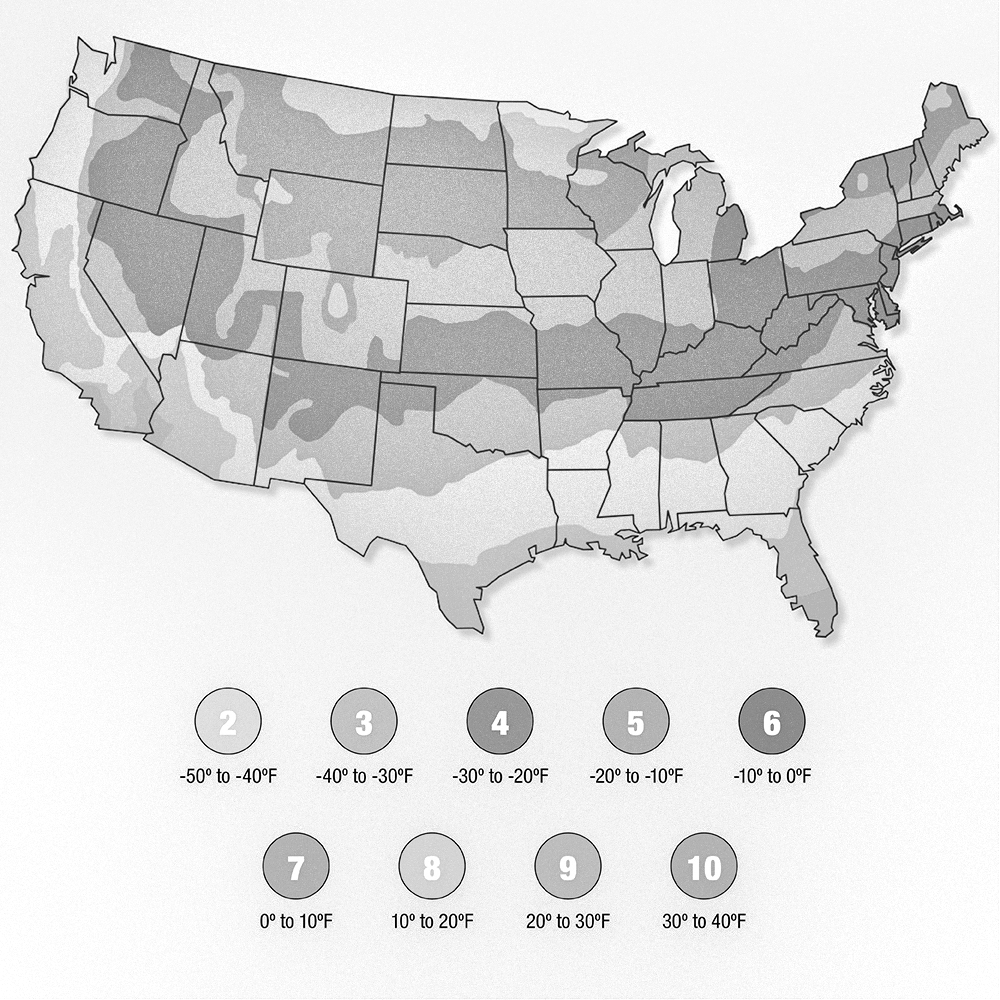



Pollination Info
Pollination Info for Bluecrop Blueberry (Vaccinium 'Bluecrop')
Bluecrop Blueberries are partially self-fertile, which means they can produce fruit on their own but will yield better and more consistently with a pollinator nearby.
The best pollinator for the Bluecrop Blueberry is the Jersey Blueberry. Other varieties such as Darrow, Ivanhoe, and Berkeley can also be suitable for cross-pollination.
It is important to have at least one compatible pollinator within 100 feet of the Bluecrop Blueberry. Planting multiple pollinators can increase the fruit yield even further.
Pollinators should be planted in the same type of soil, have similar sunlight and watering needs, and bloom at the same time as the Bluecrop Blueberry to maximize pollination success.
Blueberry bushes attract bees and other pollinators, so it is important to avoid using pesticides during the bloom period as it can harm these important pollinators. Instead, consider using natural methods or pesticides approved for organic gardening.
FAQ
Bluecrop Blueberry (Vaccinium 'Bluecrop') FAQ
-
What is Bluecrop Blueberry?
Bluecrop Blueberry (Vaccinium 'Bluecrop') is a highbush blueberry cultivar that is known for its large fruit size, sweet taste, and strong growth habit. It is a hybrid of several different species of Vaccinium and was first introduced in the 1940s.
-
Where is the best place to grow Bluecrop Blueberry?
Bluecrop Blueberry grows best in full sun and well-drained soil that is rich in organic matter. It is native to North America and can be grown in most temperate regions, but it thrives in areas with cool summers and mild winters.
-
When is the best time to plant Bluecrop Blueberry?
The best time to plant Bluecrop Blueberry is in the fall or early spring when the soil is moist and cool. You should avoid planting during the hottest part of the summer or during drought conditions.
-
How often should I water Bluecrop Blueberry?
Bluecrop Blueberry should be watered deeply and regularly, especially during the growing season. You should aim to keep the soil consistently moist but not waterlogged. In periods of drought, you may need to water more frequently.
-
When should I fertilize Bluecrop Blueberry?
You should fertilize Bluecrop Blueberry in the early spring before new growth appears. Use a balanced fertilizer with a ratio of 10-10-10 or 20-20-20 and apply according to the manufacturer's instructions. You can also give your Bluecrop Blueberry a second application of fertilizer in mid-summer.
-
How do I prune Bluecrop Blueberry?
Bluecrop Blueberry should be pruned in late winter or early spring before new growth appears. Remove any dead, damaged, or diseased wood, as well as any crossing or crowded branches. You can also remove up to one-third of the oldest wood each year to encourage new growth.
-
How do I protect Bluecrop Blueberry from pests and diseases?
Bluecrop Blueberry can be susceptible to a number of pests and diseases, including aphids, mites, powdery mildew, and leaf spot. To prevent these problems, you should keep your Bluecrop Blueberry well-mulched, avoid overhead watering, and prune regularly. If you do notice signs of pest or disease damage, you can treat with an appropriate insecticide or fungicide.
-
When is the best time to harvest Bluecrop Blueberry?
Bluecrop Blueberry should be harvested when the fruit is fully ripe and has a deep blue color. This typically occurs in mid- to late summer, depending on your location and climate. You should pick the fruit carefully by hand to avoid damaging the delicate skin.
Planting & Care
Planting Bluecrop Blueberry (Vaccinium 'Bluecrop')
Bluecrop blueberries are a great addition to any home garden. Here are the steps you should follow when planting them:
- Choose an area with well-drained soil and full sun exposure.
- Dig a hole that is twice as wide and as deep as the blueberry's root ball.
- Mix peat moss and acidic soil amendments into the soil.
- Place the blueberry plant in the hole and cover its roots with soil.
- Water the blueberry plant well after planting.
Caring for Bluecrop Blueberry (Vaccinium 'Bluecrop')
Bluecrop blueberries require good care in order to thrive. Here are some tips:
- Water the blueberry plant regularly to keep the soil moist but not waterlogged.
- Fertilize the plant with a balanced fertilizer at the beginning of the growing season and again in midsummer.
- Prune the blueberry plant each year to remove any dead or diseased wood and to shape the plant as desired.
- Mulch around the plant to keep the soil moist and prevent weeds from growing.
- Cover the blueberry plant with netting to protect it from birds as the berries ripen.
By following these planting and care tips, you should be able to enjoy a bountiful crop of Bluecrop blueberries!
Check Out These Verified Customer Reviews:
Customer Reviews
4.6 out of 5 based on 41 reviews
Thank you! Your review has been submitted.
Beautiful packaging and presentation
Vibrant and plump berries
Customer service was helpful and responsive to my inquiries.
Item has been added to your cart.



